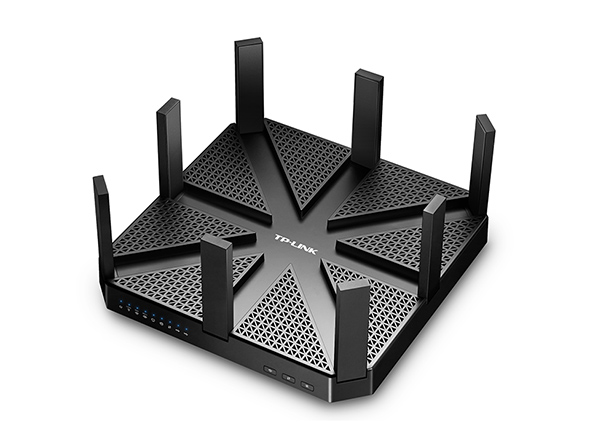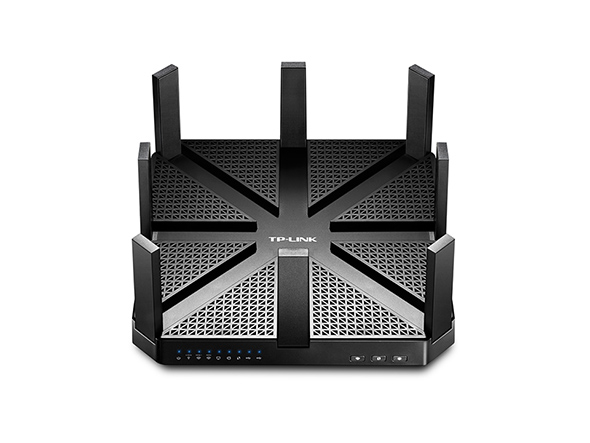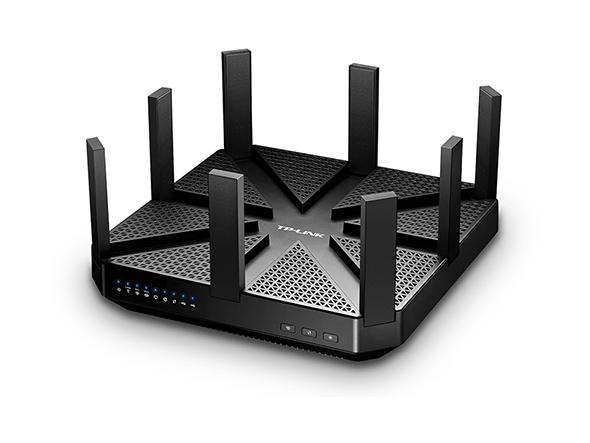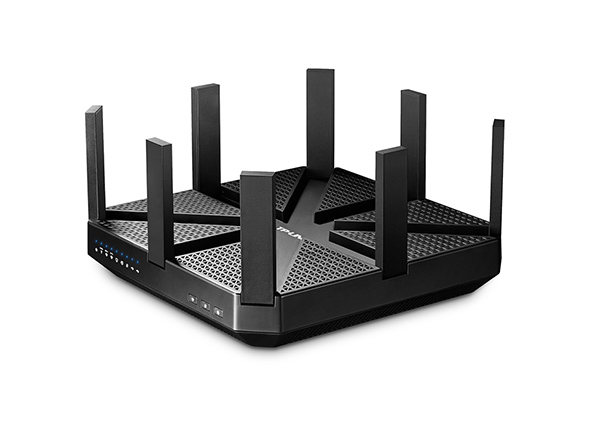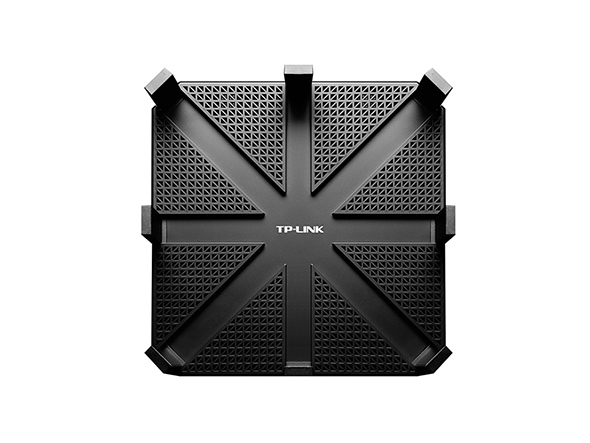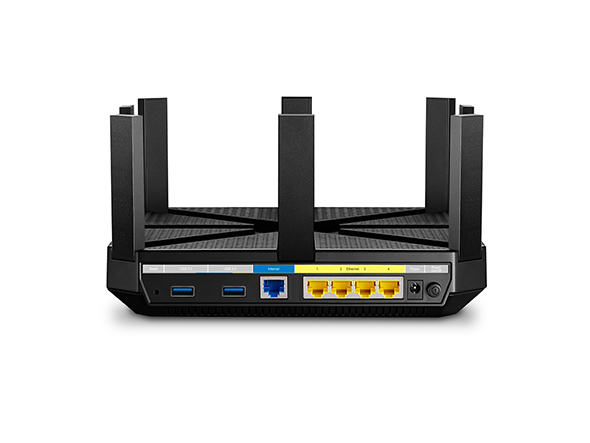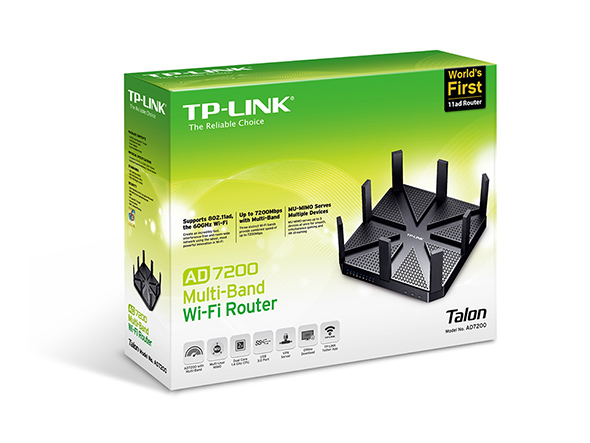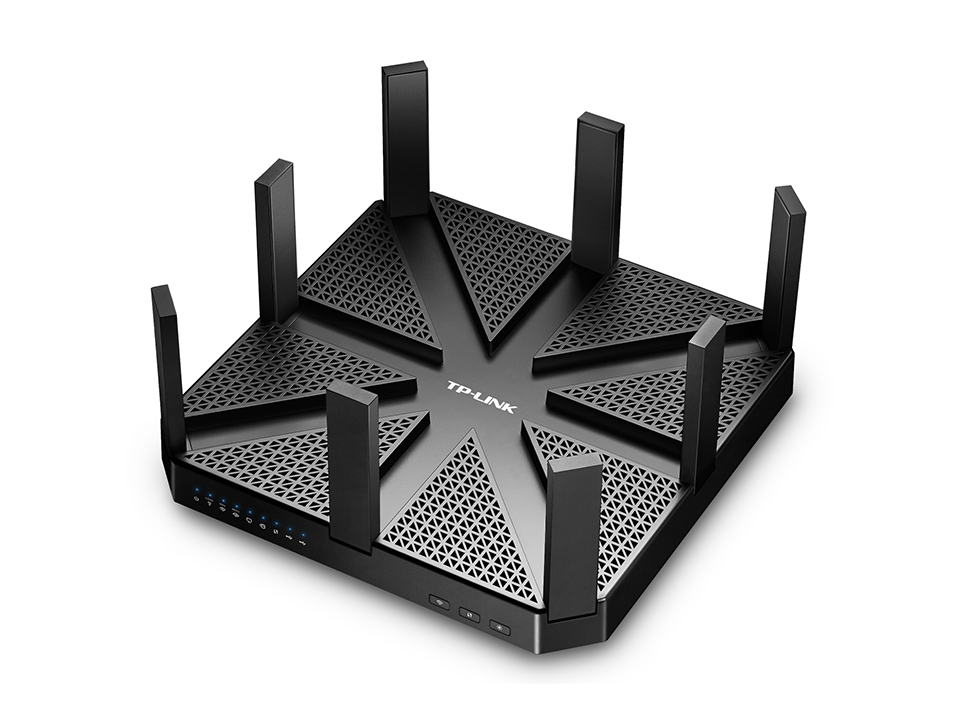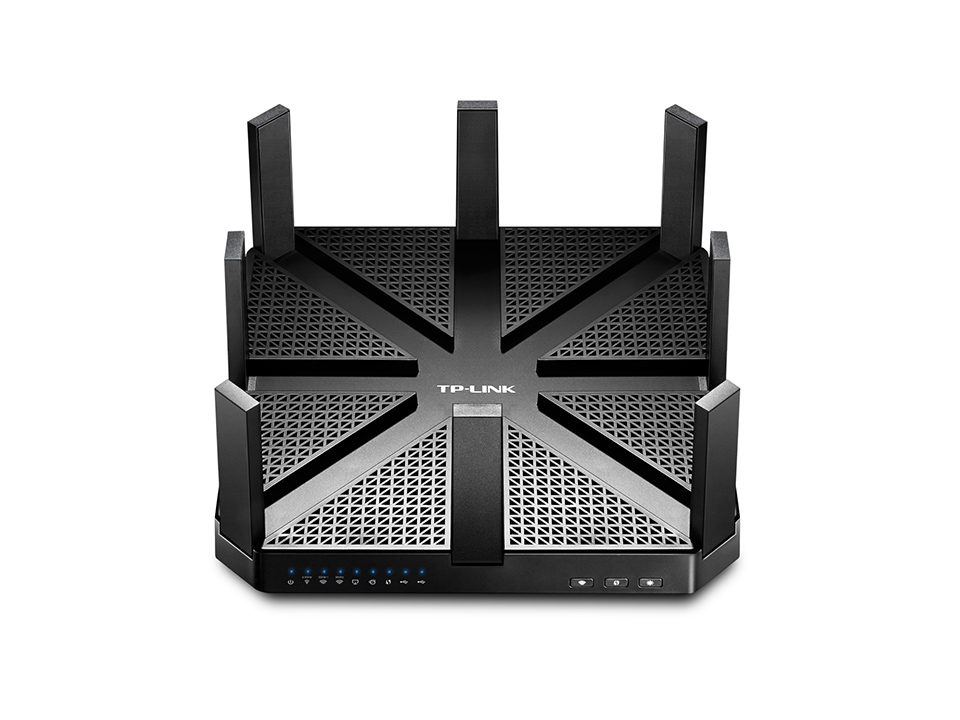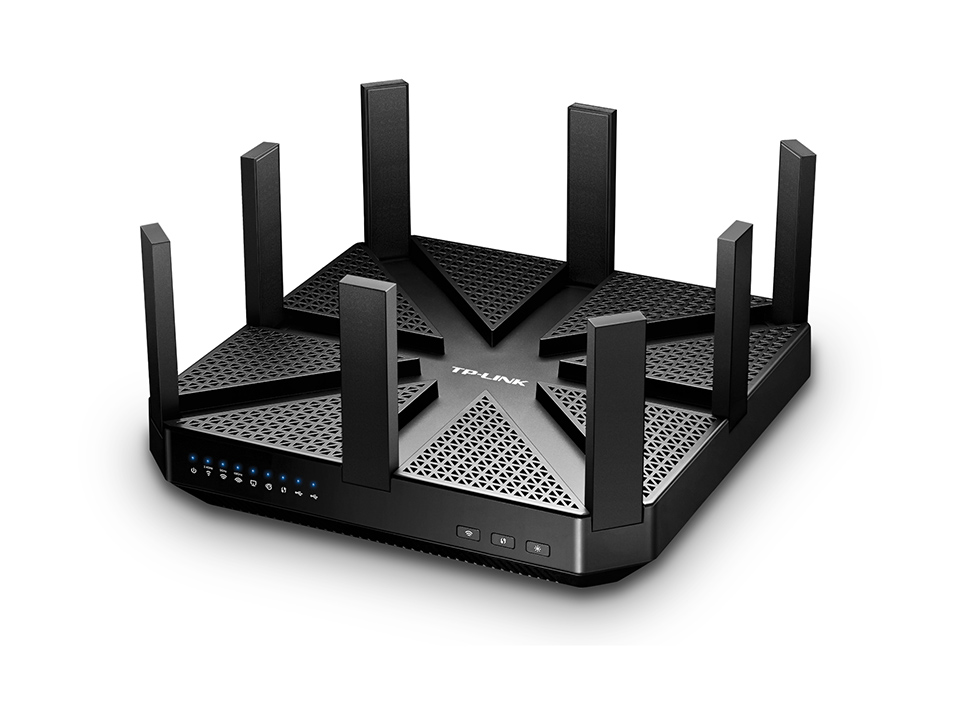AD7200
End of LifeTalon AD7200 Multi-Band Wi-Fi Router
- Supports the 802.11ad standard, the breakthrough in wireless technology
- 7200 Mbps combined wireless speeds, including speeds of up to 800Mbps on the 2.4GHz band, 1733Mbps on the 5GHz band, and 4600Mbps on the new 60GHz band
- Multi-Band Technology establishes three distinct networks that allow you to connect more devices while still enjoying peak performance
- MU-MIMO serves multiple devices simultaneously, providing speeds that are up to 3X higher
- 1.4GHz dual-core processor powers through multiple complex tasks at the same time
- Eight external high-performance antennas maximize coverage and enhance stability
- Beamforming Technology promotes stronger, more reliable wireless connections
| WIRELESS | |
|---|---|
| Standards and Protocols | IEEE 802.11ad 60 GHzIEEE 802.11ac/n/a 5 GHzIEEE 802.11n/b/g 2.4 GHz |
| WiFi Speeds | AD720060 GHz: 4600 Mbps (802.11ad)5 GHz: 1733 Mbps (802.11ac)2.4 GHz: 800 Mbps (802.11n) |
| WiFi Range | 3 Bedroom Houses 8× Fixed High-Performance AntennasMultiple antennas form a signal-boosting array to cover more directions and large areasBeamformingConcentrates wireless signal strength towards clients to expand WiFi range |
| WiFi Capacity | High Tri-BandAllocate devices to different bands for optimal performance3×3 MU-MIMOSimultaneously communicates with multiple MU-MIMO clientsAirtime FairnessImproves network efficiency by limiting excessive occupationDFSAccess an extra band to reduce congestion |
| Working Modes | Router ModeAccess Point Mode |
| SECURITY | |
|---|---|
| Network Security | SPI FirewallAccess ControlIP & MAC BindingApplication Layer Gateway |
| Guest Network | 1× 5 GHz Guest Network1× 2.4 GHz Guest Network |
| VPN Server | OpenVPNPPTP |
| WiFi Encryption | WEPWPAWPA2 |
| HARDWARE | |
|---|---|
| Processor | 1.4 GHz Dual-Core CPU |
| Ethernet Ports | 1× Gigabit WAN Port4× Gigabit LAN Ports |
| USB Support | 2× USB 3.0 PortsSupported Partition Formats:NTFS, exFAT, HFS+, FAT32Supported Functions:FTP ServerMedia ServerSamba Server |
| Buttons | Wi-Fi On/Off ButtonPower On/Off ButtonLED On/Off ButtonWPS ButtonReset Button |
| Power | 12 V ⎓ 4.2 A |
| SOFTWARE | |
|---|---|
| Protocols | IPv4IPv6 |
| Parental Controls | URL FilteringTime Controls |
| WAN Types | Dynamic IPStatic IPPPPoEPPTPL2TP |
| Quality of Service | QoS by Device |
| Cloud Service | Auto Firmware UpgradeTP-Link IDDDNS |
| NAT Forwarding | Port ForwardingPort TriggeringDMZUPnP |
| IPTV | IGMP ProxyIGMP SnoopingBridgeTag VLAN |
| DHCP | Address ReservationDHCP Client ListServer |
| DDNS | TP-LinkNO-IPDynDNS |
| Management Features | Tether AppWebpageCheck Web Emulator> |
| OTHER | |
|---|---|
| System Requirements | Internet Explorer 11+, Firefox 12.0+, Chrome 20.0+, Safari 4.0+, or other JavaScript-enabled browserCable or DSL Modem (if needed)Subscription with an internet service provider (for internet access) |
| Certifications | FCC, CE, RoHS |
| Environment | Operating Temperature: 0℃~40℃ (32℉ ~104℉)Storage Temperature: -40℃~70℃ (-40℉ ~158℉)Operating Humidity: 10%~90% non-condensingStorage Humidity: 5%~90% non-condensing |
| TEST DATA | |
|---|---|
| WiFi Transmission Power | CE:<20dBm(2.4GHz)<23dBm(5GHz)FCC:<30dBm(2.4GHz & 5.15GHz~5.825GHz)<24dBm EIRP(60GHz) |
| WiFi Reception Sensitivity | 5GHz:11a 6Mbps: -94dBm11a 54Mbps: -76dBm11ac VHT20_MCS0: -93dBm11ac VHT20_MCS8:-69dBm11ac VHT40_MCS0: -90dBm11ac VHT40_MCS9: -64dBm11ac VHT80_MCS0: -87dBm11ac VHT80_MCS9: -61dBm2.4GHz:11g 6Mbps: -95dBm11g 54Mbps: -78dBm11n HT20_MCS0: -95dBm11n HT20_MCS7: -75dBm11n HT20_MCS8: -70dBm11n HT40_MCS0: -92dBm11n HT40_MCS7: -72dBm11n HT40_MCS9: -66dBm |
| PHYSICAL | |
|---|---|
| Dimensions (W×D×H) | 9.0 × 9.0 × 4.23 in(230 × 230 × 43 mm) |
| Package Content | Wi-Fi Router Talon AD7200Power AdapterRJ45 Ethernet CableQuick Installation Guide |
*Maximum wireless signal rates are the physical rates derived from IEEE Standard 802.11 specifications. Actual wireless data throughput and wireless coverage are not guaranteed and will vary as a result of 1) environmental factors, including building materials, physical objects, and obstacles, 2) network conditions, including local interference, volume and density of traffic, product location, network complexity, and network overhead, and 3) client limitations, including rated performance, location, connection, quality, and client condition.
*Use of MU-MIMO requires clients to also support MU-MIMO.
